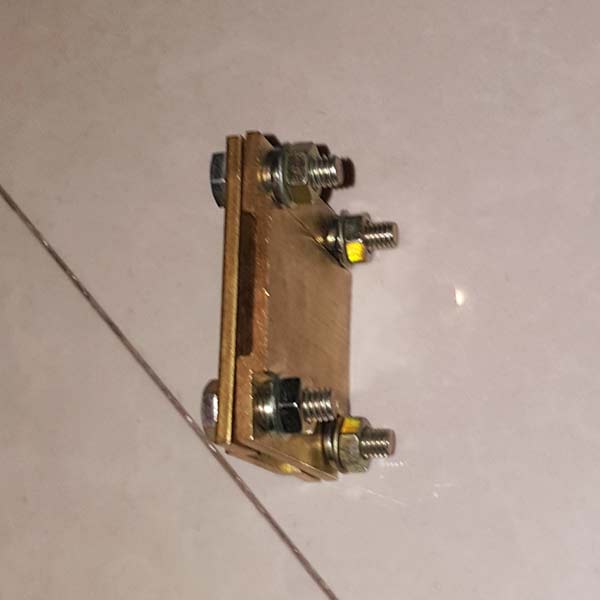The working principle of copper clad steel ground rod. Regardless of whether the lightning rod is installed externally or the lightning arrester is installed indoors, its ultimate purpose is to guide the intrusion lightning energy or internal surge (overvoltage) into the ground to avoid lightning damage, so the final leakage into the ground is the key to the entire lightning protection project , Grounding is an important link to ensure the safe and rapid leakage of current into the earth.
The grounding rod is one of the indispensable grounding devices to make the conductor fully contact with the earth to ensure the smooth discharge of the current. The material of the grounding rod is generally copper-clad steel, such as copper-plated steel, which has the high conductivity of copper and the characteristics of steel. There are many companies producing this kind of grounding rod. Copper-clad steel grounding rods are suitable for general environments and special environments with humid, saline-alkali, acidic soils and chemically corrosive media, and generally do not have anti-corrosion treatment. There is no special requirement for the soil, the smaller the soil resistivity, the better. If the conductivity of the soil cannot meet the requirements of use, the burial depth can generally be deepened.
Since the content of active ions in the soil is one of the factors affecting the grounding resistance, compounds containing active electrolytic ions in many soils are relatively rare, and a simple grounding body will not meet the grounding requirements. After experimental comparison, a reversible slow-release filler is added to the ground rod. This filler has the characteristics of water absorption, water release and reversibility. This reversible reaction effectively ensures the effective temperature of the environment inside the shell and the stability of the grounding resistance. The filler has no toxic and side effects, and in the long-term cooperation with metal electrodes, it has achieved good results in both ion generation and corrosion prevention of copper alloys. After the ions generated in this way absorb the ground moisture, the active electrolytic ions can be effectively released into the surrounding soil through deliquescence, so that the grounding rod becomes an ion generating device, thereby improving the surrounding soil quality to meet the grounding requirements.

Product features and technical advantages of copper-clad steel grounding rods
1. The construction is convenient and quick: the copper-clad steel ground electrode has complete accessories and is easy to install, which can effectively increase the construction speed.
2. The connection is safe and reliable: the copper-clad steel ground electrode uses a special connecting pipe or hot-melt welding, and the joint is firm and stable.
3. Better electrical performance: The copper-clad steel ground electrode surface layer copper material has excellent electrical conductivity, making its own resistance much lower than conventional materials.
4. Wide range of applications: Copper-clad steel grounding electrodes are suitable for grounding construction under different conditions of soil humidity, temperature, PH value and resistivity changes.
5. Improve the grounding depth: the copper-clad steel grounding electrode has a special connection and transmission mode, which can go deep underground for more than 35 meters to meet the requirements of low resistance in special occasions.
6. Low construction cost: Compared with the traditional construction method of pure copper grounding rods and grounding strips, the cost of copper-clad steel grounding electrodes is greatly reduced. (And it has superior strength, which cannot be achieved by pure copper grounding rods).
7. Unique manufacturing process: The copper-clad steel grounding electrode adopts cold rolling and hot drawing production process to realize metallurgical welding between copper and steel. In order to ensure the perfect combination of the copper layer and the steel layer, it can be drawn arbitrarily like pulling a single metal, without disconnection, warping, and cracking.
8. Excellent corrosion resistance: the composite interface of copper-clad steel grounding electrode is welded at high temperature, the surface copper layer is ≥0.254mm, there is no residue, and there will be no corrosion on the joint surface; the surface copper layer is thicker (average thickness greater than 0.4mm) Strong corrosion resistance, long service life (more than 40 years), and reduce maintenance labor intensity.
 English
English  Español
Español  Português
Português  русский
русский  français
français  日本語
日本語  Deutsch
Deutsch  Tiếng Việt
Tiếng Việt  Italiano
Italiano  Nederlands
Nederlands  ไทย
ไทย  Polski
Polski  한국어
한국어  Svenska
Svenska  magyar
magyar  Malay
Malay  বাংলা
বাংলা  Dansk
Dansk  Suomi
Suomi  हिन्दी
हिन्दी  Pilipino
Pilipino  Türk
Türk  Gaeilge
Gaeilge  عربى
عربى  norsk
norsk  اردو
اردو  čeština
čeština  Ελληνικά
Ελληνικά  Українська
Українська  Javanese
Javanese  فارسی
فارسی  தமிழ்
தமிழ்  తెలుగు
తెలుగు  नेपाली
नेपाली  Burmese
Burmese  ລາວ
ລາວ  Қазақ
Қазақ  Euskal
Euskal  slovenský
slovenský  Македонски
Македонски  Română
Română  Српски
Српски  简体中文
简体中文  Afrikaans
Afrikaans  עִברִית
עִברִית  יידיש
יידיש  Беларус
Беларус  മലയാളം
മലയാളം  Hawaiian
Hawaiian  հայերեն
հայերեն 







